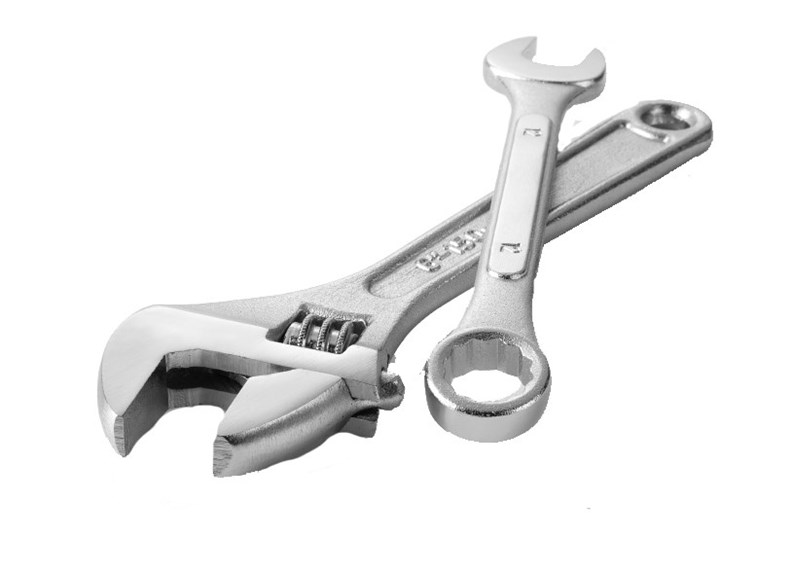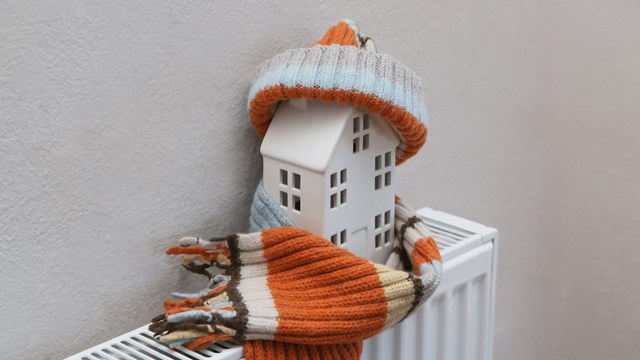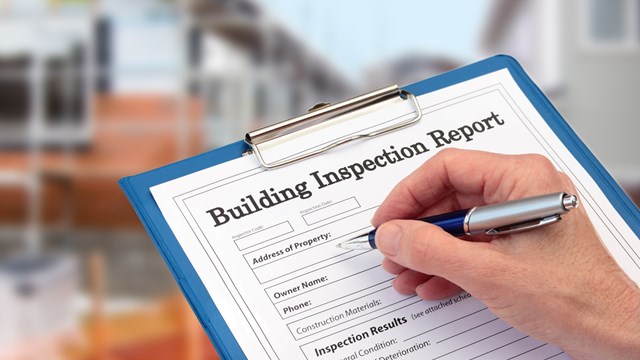After a winter destined to be remembered for its snowstorms, slush and sub-zero temperatures, you may welcome even spring cleaning with open arms. But every season - not just spring - brings with it a time to take care of specific types of building maintenance. The following are some general tips to keep your building looking good and operating smoothly throughout the year.
According to Eric Darling of Renotex Corporation, a carpet- and floor-cleaning company based in Manhattan, how often you clean your carpet and hardwood floors depends on your particular building and budgets. But don't let a professional cleaning be the first - or only - time your floors are dirt-free all year. "Attack stains when they happen," says Darling. "Do spot cleaning throughout the year to keep stains from setting over time. That will prolong the life of your flooring."
Darling continues, pointing out that, "Eighty percent of the dirt in carpets is dry particulate that can be vacuumed out. Leaving it in makes the carpet matted." At least once a year, Darling recommends having a professional cleaning to remove the oil and dirt that can't be cleaned with a regular vacuum. In spring, this also takes care of any leftover winter floor damage from residents tracking in snow, salt, mud, and other unpleasant substances.
Throughout the summer and fall, it's vital to keep on top of vacuuming and spot cleaning to account for dirt and general wear-and-tear. You may also want to schedule a professional cleaning for these months as well - spring isn't the only time to do this, especially if your building has light-colored carpets. Darling advises building managers to steer clear of lighter colors in heavily traveled areas. He also suggests using loop-pile carpet - which is dense and strong - in hallways, because it can handle traffic better. "I've gone into a lot of buildings that have expensive, cut-pile carpet. It's more high end and plush, but it doesn't stand traffic as well."
In winter, carpet-cleaning pros agree that one of the simplest, most important things to do is put down run-off mats to keep muddy, sandy, salty water off your carpets. Most dirt comes off feet in entranceways, but the mats help pick up dirt, mud, snow, and anything else that might be tracked in. It's important to clean these periodically throughout the winter to avoid a buildup of dirt, says Darling.
Scott O'Rourke of A-1 Hydro Park Hill Chemical in Mt. Vernon suggests that all buildings check the water quality in their cooling and boiler systems. "Doing [that], and chemically treating your water can extend the life of your system dramatically." A lab can provide you with recommendations to properly balance you water. "A large enough facility, [which is 100,000 square feet or larger] can install automatic feed systems, which monitor water on constant basis," O'Rourke continues. "This can be done year-round, and provides a constant assessment of your water."
According to O'Rourke, high-powered water-sprayers are terrific tools that make themselves useful year-round. In the spring, high-pressure washers are useful for cleaning sidewalks. "[Sidewalks need] at least a spring cleaning with a water/steam power washer, and possibly more regularly, depending on the demands of particular buildings," says O'Rourke. They're a great way to restore the appearance of your entranceway or steps after the harsh winter. O'Rourke also notes that the bacteria-killing properties of hot water power washers can also rid your outdoor area of odor problems, and he says they're great for cleaning up oil drippings in garage areas and driveways.
In winter, the hot water washers can even be used to quickly melt away snow. No matter what the season, many building maintenance pros feel that a good quality, high-pressure spray cleaning system easily pays for itself in a single season.
Your building's plants - shrubbery, flowers, trees, and other foliage and landscaping elements - also need year-round attention. "When it comes to early spring, there is a fair amount of clean up," says Madelyn Simon, president of Madelyn Simon & Associates, a gardening and landscaping firm based in Manhattan. Simon advises building staff to prune off dead limbs, and remove things that didn't survive the winter to ready the area for the new season and any new planting. To ward off opportunistic pest insects, Simon recommends doing a "pre-emergent spray." "This is a horticulture oil - it's a really smart thing to do," says Simon. "It takes care of any unhatched insect eggs that may remain [in foliage or under bark] from last season."
The soil surrounding plantings should also be aerated in the spring. Explains Simon, "You want to put air back in your soil, opening it up, tilling it. Soil is compressed and cultivating allows for life." Fertilizing the soil is also a must in the spring, as is neutralizing the salt that seeps into the ground over the winter.
"When there is a tremendous amount of precipitation, like this winter, a lot of salt damage happens with street plants," says Simon. "Salt is very caustic." Simon suggests using less harmful substances on snow and ice, such as kitty litter or sodium calcite.
In addition to aerating, fertilizing, and balancing the PH of your landscaping soil, spring is also a good time to lay fresh mulch, which keeps plant roots cool, keeps moisture in, and looks tidy. Mulch is also the best weed prevention, says Simon, along with the appropriate herbicides.
During summer, Simon encourages the cultivation of a healthy horticultural environment by staying on top of weeds, insects and water. Pruning and cutting back your plants is important, says Simon, because "you want to direct where [the plant is] growing so it looks the best it can."
Fall is the time when you should spray plants with an anti-desiccant, which coats the foliage to minimize wind damage. This is especially necessary in terrace and roof planting, where exposure to wind is more likely. You should also start preparing for winter. Make sure the area is tidy and branches are pruned back.
If your building has extensive plantings and landscaping, you probably already have a gardener or landscaping expert overseeing season-to-season maintenance and care; it's important for your board and managing agent to keep in contact with this person or firm to keep tabs on what's going on with the building's green spaces. Making an appointment early with a landscaper or floral professional will assure that your building will have its plants on foliage in place come spring. "Call in winter to get the first service," says Simon. "Don't wait until spring. It's better to be a little too early than a little too late."
Your boiler is the beating heart of your building in cold winter months, so it's vital that it's kept in tip-top shape. Technically speaking, the boiler mechanism itself is not terribly complicated; fuel oil burns in a combustion chamber, forcing hot gasses to pass through the boiler's metal tubes to heat the building's water. The byproduct of this process is soot, which accumulates on the tube walls and inhibits heat transfer, says Michael Costelloe, president of Robert L. Teitelbaum, Inc., a boiler maintenance firm based in Jamaica, Queens.
According to Costelloe, boilers require two types of cleanings: The first is a major cleaning during the spring/summer off-season. Before the cleaning company arrives, the boiler should be shut down so it goes cold. Workers will clean and vacuum all areas of the boiler and combustion chamber. They'll scrub the tube assembly with wire brush tubes, vacuum soot out of boiler, and clean the breaching (the part of the chimney that connects chimney with boiler), as well. This should be done for oil-burning boilers as well as gas-burning models because both accumulate soot. The entire cleaning takes three to four hours, and gives workers the opportunity to see if anything is broken.
The second kind of cleaning is supplemental and less invasive, but still necessary to maintain your boiler's optimum performance. "You should do this on a monthly basis during the heating season," says Costelloe. This is important especially if the boiler is used for air conditioning or if it burns a lower-grade oil. This cleaning "makes sure the tubes are clean and makes sure there is an optimum amount of heat transfer between the water and tubes," says Costelloe. The building super or manager should shut down the boiler when cleaners arrive, and they'll vacuum the tubes while they're still hot. The supplemental cleaning takes roughly an hour and a half.
Vent and duct cleaning is not really weather or season dependent, according to Paul Ruoso, vice president of AMG Environmental in Jamaica, Queens, but it's important nonetheless.
"The only real way to properly clean the vents is [for the cleaning crew] to set up a hepa-vacuum," says Ruoso. A hepa-filter traps particles smaller than five microns in size with 99.97 percent efficiency. Going from the top floor to the bottom floor, the cleaning crew will first remove the grills or registers from the vents, cleaning off all the fuzz, lint, dust, and debris that they're there to catch. After that, the inside of the vent is manually cleaned with hepa-vacuums usually worn by the cleaners in backpacks.
A total vent and duct cleaning should be done every four or five years, but you may want to consult a vent-cleaning professional to discuss your building's particular needs.
Each time of year brings with it unique maintenance responsibilities. Knowing when to schedule certain regular, seasonal, or annual repairs and preservation measures will keep your building running smoothly. A maintenance routine will prolong the life of your building and its vital components and, ultimately, help you avoid costly repairs resulting from neglect.







Leave a Comment